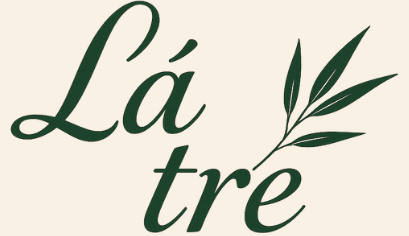The realms of science and poetry might seem disparate at first glance, one grounded in empirical observation and the other in subjective expression. Yet, both disciplines fundamentally seek to understand the human condition and the world around us. It is in this shared pursuit that we find the vital role of poets for science – individuals bridging these worlds, using the power of language and emotion to illuminate scientific concepts and foster deeper dialogue.
For years, efforts have been made to communicate scientific research to wider audiences. Traditionally, this has involved explanations and summaries, aiming for clarity and accuracy. However, science communication, while essential for disseminating facts, doesn’t always capture the wonder, the human endeavor, or the societal implications inherent in scientific discovery. This is where poets can offer a unique lens.
Dr. Sam Illingworth, an Associate Professor at Edinburgh Napier University, has dedicated his work to exploring and leveraging this intersection. His book, “Science Communication Through Poetry,” stems from a simple yet profound goal: to integrate poetry and science more deeply into people’s lives. His journey began with a blog, “The Poetry of Science,” where he transformed scientific research papers into poems. Initially, the focus was on direct communication of the science within the verse, which, by his own admission, sometimes resulted in forced and awkward rhymes.
Over time, a crucial realization emerged. The poem didn’t need to didactically explain the science. A summary could handle that. Instead, the poetry could serve a different, perhaps more powerful, purpose: to offer an alternative perspective, evoke emotion, and spark curiosity that would encourage audiences to learn more. This shift in approach highlights a key strength of poets for science: they don’t just translate data; they interpret its meaning, its beauty, and its impact through the evocative power of poetry.
This evolving perspective led Dr. Illingworth into the world of spoken word poetry, performing science-inspired pieces globally. This performance aspect brought him into contact with a diverse community, revealing opportunities for poets and scientists to collaborate, exploring the complex, often liminal spaces where their expertise and life experiences overlap. This collaboration moves beyond simply informing an audience; it involves a two-way exchange.
However, performing and blogging remained largely one-directional forms of communication. While informing, they didn’t facilitate true dialogue with the audience. This sparked the idea that the true potential of poetry in this context might lie not in communicating science to a non-scientific audience, but in developing an understanding of science with them, through shared creative practice.
 Book cover of Science Communication Through Poetry
Book cover of Science Communication Through Poetry
Collaborative poetry writing workshops emerged as a powerful method for achieving this. These workshops allow scientists and non-scientists alike to explore their lived experiences and perspectives on scientific topics that matter to them. For scientists, writing poetry can offer a rare outlet for emotion and subjectivity, humanizing their work. For non-scientists, it’s an opportunity to remind researchers of the human element and societal impact behind their data and theories. These workshops demonstrate the capacity for poets for science to act as facilitators of understanding and empathy. The creative act of writing together bridges potential divides, creating equitable and actionable connections.
Recognizing the need for a sustained platform for this burgeoning field, Dr. Illingworth helped launch Consilience, the world’s first peer-reviewed science poetry and art journal, in early 2020. Consilience applies principles of scientific peer review to creative submissions. Instead of simple acceptance or rejection, submitted works undergo review by independent experts who provide feedback, and handling editors collaborate with the poets and artists to refine their pieces. This unique approach fosters a culture of development and rigor within the science-engaged creative community.
The establishment of journals like Consilience and ongoing collaborative projects underscore the growing recognition of poets for science as valuable contributors to both public engagement and scientific culture itself. Their work goes beyond simply adding artistic flair to facts; it delves into the philosophical, ethical, and emotional dimensions of scientific progress.
Through his book and continued work, Dr. Illingworth aims to provide an accessible entry point for scientists curious about poetry, poets interested in science, and anyone seeking to understand how these two venerable branches of human knowledge can work together.
Whether exploring the vastness of the cosmos, the intricacies of the human body, or the profound environmental changes shaping our planet, there is fertile ground for poetic inquiry. Just as classical poets have grappled with fundamental aspects of the human condition, exploring themes from robert frost poems on death to the simple beauty of nature in short poems by robert frost, poets for science engage with the modern world’s most pressing questions and discoveries through verse.
Their ability to condense complex ideas into evocative imagery and relatable language makes science more accessible and resonant. By translating the wonders and challenges of scientific discovery into the emotional landscape of poetry, these poets help build bridges of understanding, fostering a more informed and engaged citizenry. The collaboration between scientific rigor and poetic imagination enriches both fields and enhances our collective ability to navigate and appreciate the complexities of existence.
 Dr. Sam Illingworth profile picture
Dr. Sam Illingworth profile picture
The journey of connecting science and poetry is ongoing, marked by experimentation, learning, and valuable collaborations. As Dr. Illingworth’s experience shows, the initial attempts may involve missteps, but the potential for profound impact is immense. The work of poets for science is vital in demonstrating that understanding the world requires not only empirical analysis but also creative interpretation and emotional connection. Their efforts remind us that the pursuit of knowledge and the expression of human experience are deeply intertwined.
